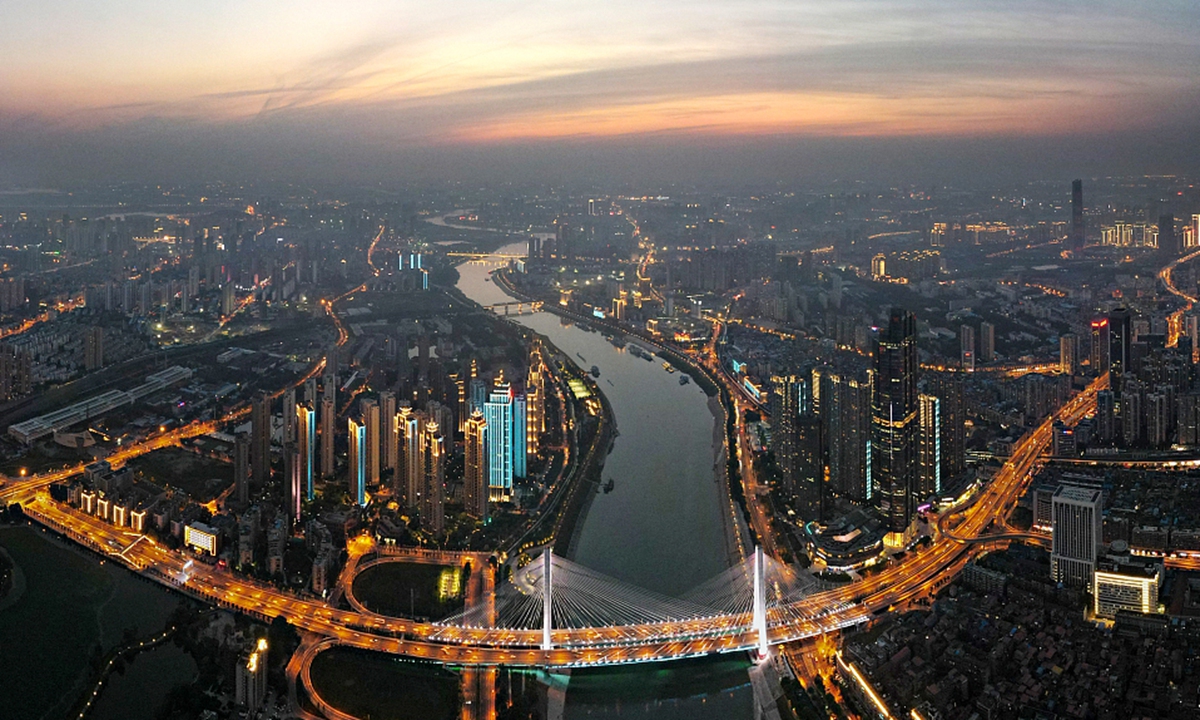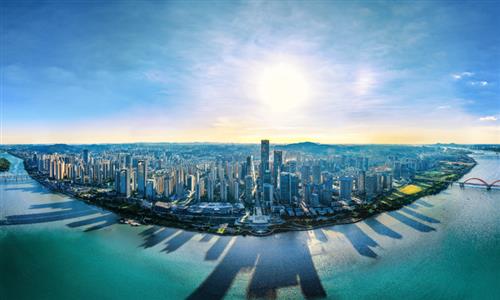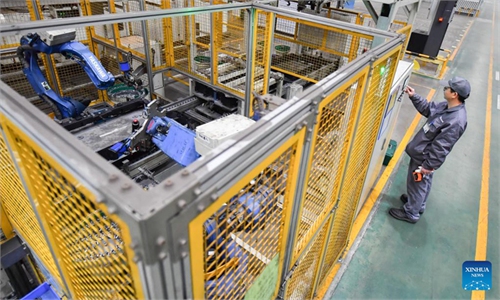
Wuhan, capital city of Central China's Hubei Province Photo: VCG
China's central government has called for ramped-up efforts to promote the rapid economic development of the country's six central provinces, which should act as the "Connecting Bridge" and "Central Corridor" between the better developed coastal provinces led by Shanghai and Guangdong, and less developed western outlying areas such as Qinghai and Gansu.It is true that without a flourishing economy in Central China, the pace of national modernization will inevitably be dragged down.
During the past five years, the overall economic scale of the country's central provinces has increased by approximately 28.4 percent, above the national average growth rate, official data showed. One highlight of the six central provinces - including Jiangxi, Hunan, Hubei, Henan, Anhui and Shanxi - is that they have shored up adequate infrastructure projects and garnered sufficient human resources for the next-stage development and economic take-off.
In terms of economic size, the gross domestic product of the central six provinces reached 27 trillion yuan ($3.77 trillion) in 2023, accounting for about 22 percent of the national GDP. The region covers an area of 1.03 million square kilometers and has a total population reaching 368 million.
As choreographed by the country's policymakers, the six central provinces should advance reforms for the market-based allocation of production factors, coordinate and refine their systems underpinning the market economy, and must comprehensively revamp and clear up local protectionist practices, with a view to promoting reasonable flow and optimal allocation of varies production factors across the provinces, thus contributing to the formation of a unified national market.
What the six central provinces need to do in the coming several years is to scale up the capability of their technology innovation, persistently renovating traditional manufacturing plants by using the 21st century new and high-technology, such as the high-speed and high-capacity industrial internet enabled by Huawei's 5.5G, latest robotics tech, quantum computing and AI solutions.
For instance, the two central provinces of Anhui and Hubei are now leading in manufacturing advanced electric cars and permanently chalking up their green foothold in China.
The momentum of innovation-led economic development of Central China has been continuously invigorated in the past five years, together with the region's increasingly stronger industrial foundation, gathering of the talented people, smarter transformation of manufacturing plants and significantly improved living standards. Simultaneously, large-scale equipment renewals in the region to make the manufacturing sector "higher-end, smarter and greener" have made noticeable progresses.
The policymakers have reiterated the importance of invigorating technology innovation to proactively cultivate and develop new quality productive forces in the six central provinces.
The region needs to shore up "advanced manufacturing sector, new industrialization and future-oriented innovation capability", the policymakers said. Meanwhile, the central provinces need to advance ecological protection and low-carbon development so as to "accelerate the construction of a beautiful central region" in the country. Hard work must be continued to prevent and curb air and land pollution, improve the ecological environment of major rivers and lakes in the region.
By all metrics, the city skylines in the six central provinces have greatly improved compared with a decade ago, and the region's industrial structure has changed for the better, setting the basis to sustain and strengthen the endogenous driving force for the region's future growth.
According to the policymakers, it is of great importance to advance the development of a modern transportation infrastructure network in the central provinces so as to improve the pivotal role of this region acting as a reliable and resilient "Central Corridor" for China's sustainable growth. The high-speed railways and cross-provincial expressways and highways linking Wuhan, Changsha, Nanchang, Hefei, Taiyuan, Zhengzhou and other cities in the provinces should be high on work agenda.
Currently, it is also imperative to step up efforts to build up three to four urban clusters along the middle reaches of the Yangtze River, and also in Henan and Shanxi provinces, the policymakers said. And, the six central provinces should get to grasp the significance for the region's development to be fully aligned with that of Beijing-Tianjin-Hebei region, the Yangtze River Delta region, and the Guangdong-Hong Kong-Macao Great Bay Area. A well-coordinated development among them will likely yield unexpected but pleasant surprises.
And, it is essential for the six central provinces to expand institutional opening-up, get deeply integrated into the development of the Belt and Road Initiative, proactively connect with the new Eurasian Land Bridge and the new western land-sea corridor, improve their pilot free trade zones, and build more high-standard platforms for economic cooperation and integration, so that the region will play a bigger role in connecting domestic and international flow of production factors.
The central provinces' important role as the base for China's grain production, energy and raw materials supply, rapidly emerging high-tech manufacturing and national transportation and logistics hub must be consolidated at all costs, so that the region could make large strides to promote high-quality development and write a new chapter in energizing the region in the process of advancing nationwide modernization.
It is fair to say that the region now has better conditions for advancing high-quality development. Yet there are still many difficulties and challenges that need to be dealt with and addressed. It is crucial that local authorities in the six central provinces to make forward-looking plans for modernizing the industrial system underpinned by advanced manufacturing and high-tech innovation. Rural reform measures should be further strengthened there, and supportive government policies to boost the region's fast development should be ameliorated and new growth drivers will be constantly created there.
The author is an editor with the Global Times. bizopinion@globaltimes.com.cn



